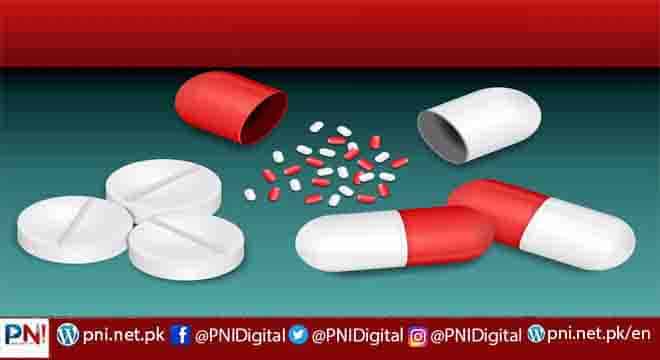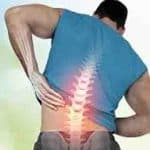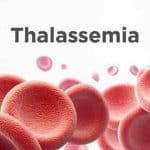ISLAMABAD, April 27 (Online): People with high blood pressure, or hypertension, are often prescribed one or two medications, in addition to lifestyleTrusted Source changes, to help lower their blood pressure.
Now new research suggests that taking three or four medications — at lower doses and as the initial treatment — may help people lower their blood pressure without increasing the risk of most negative side effects.
Multi-drug combo improves blood pressure
To estimate how much benefit this kind of low-dose combination therapy offers for controlling blood pressure, researchers reviewed seven previous randomized clinical trials. They also combined the results of these studies, using a statistical method known as a meta-analysis.
Their analysis suggests that combining low doses of three or four blood-pressure-lowering medications is safe and effective as an initial treatment strategy for high blood pressure. Previously, three-drug combinations had been recommended only if they have difficulty keeping their blood pressure under control with two drugs.
The seven randomized clinical trials included in the new analysis compared low-dose combinations of three or four blood-pressure-lowering drugs to treatment with a single drug, usual care or an inactive placebo.
Researchers defined low dose as half or less than half the standard dose.
The clinical trials included a total of 1,918 patients. In five of the trials, participants were followed for four to 12 weeks, and for six to 12 months in the other two trials.
People treated with low dose as half or less than half the standard dose.
The clinical trials included a total of 1,918 patients. In five of the trials, participants were followed for four to 12 weeks, and for six to 12 months in the other two trials.
People treated with low-dose drug combinations saw their systolic blood pressure decrease on average by 16 to 28 millimeters of mercury (mm Hg) over 4 to 12 weeks, the analysis showed.
In contrast, systolic blood pressure decreased 12 to 18 mm Hg on average in the group taking one drug or receiving usual care.
Share on PinterestAt six and 12 months, people receiving low-dose combination therapy continued to have greater reductions in their blood pressure compared to the one-drug or usual care groups.
Low-dose combination therapy also lowered blood pressure more than placebo, researchers found.
In addition, a greater percentage of people receiving low-dose combination therapy lowered their blood pressure below 140/90 mm Hg, compared to those receiving one drug or usual care. This was true during the short-term and long-term follow-up.
According to the American Heart AssociationTrusted Source, Hypertension Stage 2 is when the blood pressure is consistently at or above 140/90 mm Hg.
Two-thirds of people in the clinical trials were able to control their blood pressure with low-dose combination therapy, the researchers found. However, that means that one-third would “require treatment intensification to achieve better control rates,” they wrote.
Overall, there was a low risk of adverse effects with low-dose combination therapy. However, people taking three or four medications were more likely to experience dizziness compared to those treated with one drug or usual care.
Not yet the recommendation for people with hypertension
One limitation of the analysis is that some of the clinical trials included people who were taking blood-pressure-lowering medications at the start of the trial — so low-dose combination therapy was not their initial treatment.
However, the authors of the new study found that the results were similar when they compared people who had already been taking medications to those who started on the low-dose combination therapy.
Another limitation of the analysis is that it included only a few clinical trials, with just two trials following patients for six to 12 months
The authors point out that as a result of this, they may not be able to clearly see if people on the low-dose combination therapy had fewer or more side effects than the other groups.
Dr. Michael Broukhim, an interventional cardiologist at Providence Saint John’s Health Center in Santa Monica, Calif., said larger studies would be needed to clearly assess the adverse effects of low-dose combination therapy.
For example, “one of the concerns about the side effect of dizziness is that it may be a sign that patients are becoming hypotensive (have low blood pressure),” he told Healthline. “With this, there’s a concern that patients may faint or pass out, or have another bad outcome.”
Ideally, he would like to see a larger randomized clinical trial that compares low-dose combination therapy to taking a single pill, focused on people with high blood pressure but no related health conditions.
Still, “it’s a good study, and it shows that you need to look at treating from multiple angles to get the best results, in terms of lowering blood pressure,” he said.
Increasing the medication dose can mean more side effects
The study also shows that patients tolerate low doses of multiple medications, he said, and that this approach may work better than increasing the dose of a single medication to achieve blood pressure control.
With many medications, increasing the dose also increases the risk of negative side effects.
Dr. Sanjiv Patel, an interventional cardiologist at MemorialCare Heart & Vascular Institute at Orange Coast Medical Center in Fountain Valley, Calif., agrees. “The key is multiple medications, but at low doses, because high doses can also cause side effects and problems,” he told Healthline.
However, Broukhim questions whether this particular paper will change how physicians treat high blood pressure — for several reasons.
For example, patients may have other health conditions — such as diabetes or heart disease or rheumatoid conditions — that need to be treated alongside high blood pressure.
“There are multiple decisions that make a once-size-fits-all approach for the treatment of hypertension very difficult,” he said.
Will a polypill be the answer for high blood pressure?
In addition, it’s more challenging for patients to take several pills every day.
“Nobody wants to take multiple medications,” said Patel.
One solution to this is combining several drugs in a single pill, what’s known as a polypill. Patel said this approach can help patients take their medications regularly.
Research supports this, at least with cardiovascular medications — in the study, patients who had a heart attack adhered better to their medicine regimen if they were given a polypill versus multiple pills.
One challenge with polypills, though, is adjusting the medication to fit the needs of the patient.
“If you have to change one of the medications, then you have to change the whole pill,” said Patel.
Broukhim said polypills for blood-pressure-lowering medications may not be possible with the current state of the pharmaceutical industry.
Medications that would work together may be manufactured by different companies, which would require them to agree to combining their drug with others in a single pill.
However, “as we get more generic hypertensive medications, developing polypills may be easier,” said Broukhim. “That would be helpful in getting patients on multiple medications, without them having to swallow three or four pills each day.”
Although some treatments may work better than others, “ignoring high blood pressure is not the way to go,” he said. “We need to be aggressive about treating hypertension to reduce cardiovascular comorbidities — strokes, heart attacks and other issues.”
Follow the PNI Facebook page for the latest news and updates.








